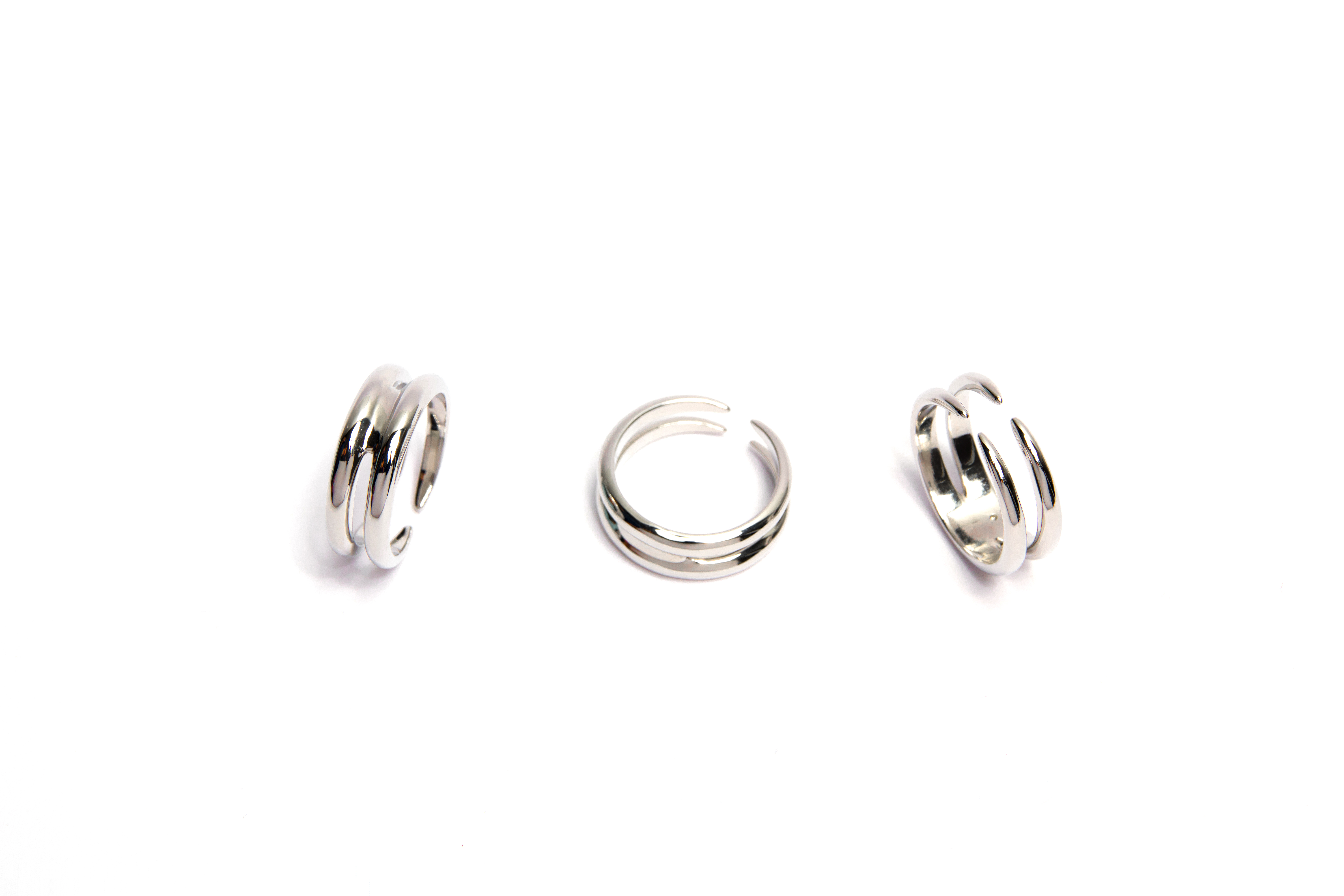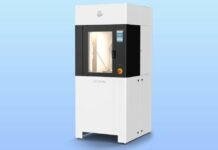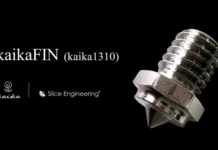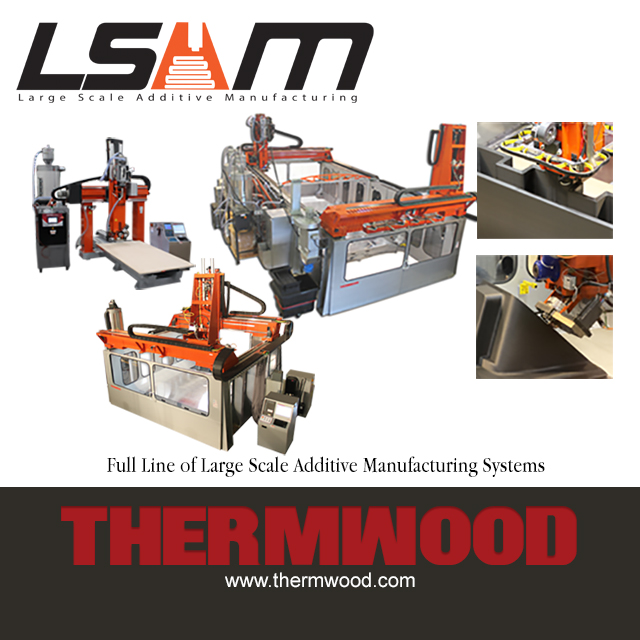3D printing enables users to achieve different stages of their project, from modeling to prototyping. Some of the key sectors that take advantage of the solutions offered by additive manufacturing include architecture, medicine, automotive, aerospace and jewellery. In general, 3D printing impacts 3 main elements in these sectors: production costs, time and the realization of complex shapes.

Image INITIAL (Prodways group)
As far as jewellery is concerned, 3D printing is part of all stages of the manufacturing of jewels. This is due to the widespread adoption of CAD software by jewellery designers.
This dossier aims to highlight the impact of additive manufacturing in the jewellery sector. It will discuss the process of modeling to the final product, the importance in the choice of materials, the technologies used and characteristics specific to some companies. Last, it will bring out the advantages and disadvantages that emerged from this analysis.
In order to tackle this issue, 4 companies joined the 3D Adept team and shared their experience in the use of 3D printing in the manufacturing of jewels. They include Materialise, Sculpteo, Prodways – The Creations Division -, providers of 3D printing services, and Boltenstern, jewellery maker.
3D printing in the jewellery sector
This technology is mainly used for rapid prototyping of jewels after modeling, the creation of jewelry models for the manufacturing of moulds with lost wax, or the direct manufacturing of the jewel using metal 3D printing.
The 3D printing technology has proven itself in the production process of companies. It can be used both for mass production or one-off production hence the increasing interest it aroused in the jewellery industry.
According to a research from the American firm SmarTech Markets Publishing entitled “3D Printing Opportunities in the Jewelry Industry – 2017: An Opportunity Analysis and Ten-Year Forecast“, this market may reach $ 900 million in 2026.
A great number of manufacturers specialize in 3D printers designed for jewellery professionals. Prices start at several thousand euro for an entry-level 3D desktop printer. For professional 3D printers, prices are higher and depend on the features, resolution offered and other settings (3D print volume, print speed etc.).
Speaking about the manufacturing process, the report reveals that: ‘‘even in traditional jewelry manufacturing with vulcanized silicon molds, the initial model is often 3D printed using high-temperature resistant photopolymer resins. Jewelry prototyping for size and shape verification is complemented by the use of directly 3D printed wax and resin patterns for direct casting and serial manufacturing. The next evolutionary step is direct metal 3D printing.’’[1]
Still in this context, the report lays emphasis on the increasing use of 3D printing by jewellery makers. The introduction of low-cost systems (sub $5,000) and increasing high productivity systems may explain this use. They ensure the production of complex and customized parts in series. Acknowledged suppliers in this area include Stratasys, 3D Systems, EOS, German EnvisionTEC (SLA) and Formlabs (SLA).
1.1. 3D printed jewels: from manufacturing to the final product
1.1.1. The importance of the choice of materials
Materials are essential in manufacturing; they give the jewel all its quality.
First of all, it should be said that there are two main families of materials used for 3D printing: plastics (ABS, PLA, polyamide, etc.) and metal powders (gold, silver, steel, titanium, etc.). However, one can also print ceramics, wax, sand, glass and even wood.
Each material integrates unique mechanical properties; therefore, its limits are specific to the systems used and the creation of the jewel.
According to the same SmarTech report, precious metal alloy metal powders such as gold or platinum used in direct laser printing for the manufacturing of rings would have the greatest market potential.
Gold, the most frequently used material, may represent 86% of the market by 2022. Cooksongold, Legor, Progold and Hildebrand are some of the well-known precious metal powder providers.
In addition, new technologies provide the possibility to offer new precious-metal alloys and gold colors (such as green and blue). Furthermore, a manufacturing that integrates these materials cannot be carried out using conventional techniques. Indeed, once they are combined with 3D printing, the alloys allow the manufacturing of lightweight platinum jewelry which cannot be achieved using a traditional manufacturing process.
Apart from gold, silver, copper and rhodium can also be used by jewellery makers. The finishing with these materials can be brushed, polished, satin or matte.
1.1.2. Types of technologies
Just as each material has its own properties, each technique can only be used for a specific material.
The SLA (Stereolithography) and DLP (Digital Light Processing) technologies are the most frequently used technologies in this area. These 3D printing technologies require the use of liquid resins as printing material. They produce objects that are very smooth on the surface with very fine details, compared to FDM technology.
Given the fine details of the end-products in the manufacturing of jewels, the resolution of the 3D printer is a key factor to take into account. Smooth surfaces are required when 3D printing is used to create moulds using lost wax.
When 3D printing integrates moulding…
The manufacturing of jewellery is made from moulds, thanks to the technique of lost wax. The model of the jewel to manufacture with metal is 3D printed using a resin. The 3D printed jewel is thereafter cast in a resistant material similar to plaster. This mould is then heated to high temperature, which completely burns the thermosensitive resin (wax). The metal (gold, silver, platinum) can then be poured into the mould.
After the cooling of the metal, which has taken the shape of the mould, the finishing stage must be carried out and if required, the precious stones can be added.
1.1.3. An insight into the manufacturing processes of companies
As a reminder, as part of this dossier, 4 companies shared their experience in the manufacturing of jewellery. Sculpteo, Prodways and Materialise specialize in 3D printing services. Boltenstern is a family business that manufactures and sells jewellery.

Clément Moreau, CEO of Sculpteo
Sculpteo
Clément Moreau, CEO of Sculpteo (a company that provides professional online 3D printing and laser cutting services) explains that the company mainly collaborates with designers. The latter designed objects that are either made in plastic (be it for finished products or prototypes), or in precious material (silver, bronze, gold plated …); and these objects are manufactured with lost wax.
For the co-founder of Sculpteo, the ability to manufacture in small series is the main advantage of 3D printing in this sector. Speaking of the materials used, Mr. Moreau explains: “With lost wax, we can use all types of precious metals: gold, silver, nickel, platinum, etc. We print wax and we make the foundry in a conventional way. “
Talking about manufacturing, the CEO explains that “in an independent way, a designer can make a piece using lost wax without tooling and making wax by hand. Therefore, he saves time because once the design is carried out, he can produce one unit of the finished product. And [3D printing] is the only technology that can do that.”
Prodways
Prodways, specialist in industrial and professional 3D printing, has a division dedicated to luxury, art, design and architecture: Initial. Catherine Gorgé, Managing Director of this unit, explains that companies within the jewellery industry request their services both for prototyping and for the manufacturing of the finished product.
Speaking of materials, Catherine Gorgé highlights the titanium powder, the most compatible material with the EDM (Electrical Discharge Machining) technology used in the division. This technology allows a direct printing of the finished product. Furthermore, there is a growing use of ceramics in this area.

Catherine Gorgé
To mention a specific case, the Managing Director talks about Inorganic Jewels. “We 3D printed the jewels with a Cast 200 resin on a L5000 3D printer. (The high definition resin is also called lost wax.) Thereafter, a foundry melted our wax models,” she explains.
As far as prototyping is concerned, the division manufactures prototypes of necklaces with the sintering polyamide powder (pA2200) so that the creators (A + A Cooren) can validate their volumes.
Compared to traditional manufacturing techniques, 3D printing allows designers to avoid the mould making stage as they directly print with lost wax. Other advantages obviously include time saving and the capacity to achieve complex shapes and geometries.
Lastly, if 3D printing is increasingly used for jewels made with titanium, therefore, “the price of this material should decrease in order to truly democratize the technology.”
Materialise
Materialise, another provider of 3D printing technologies, collaborates both with designers and jewellery makers to manufacture accessories. In this field, the Belgian company offers the services of its software “Materialise Magics” to manufacturers. Jewellery makers could request the services of another provider for the printing.
Materialise explains the design process via a collaboration with Titan Company Ltd., watchmaker and jewelry manufacturer in India.
“The design gets put into a digital CAD file, which is then converted into a 3D-printable format with Materialise Magics software. The software converts file formats, edits object size and scale, fixes any conversion errors and adds support structure so the model doesn’t drift away on the printer bed. The model is then printed out in resin on a Stereolithography printer and in the final production stage, the 3D print is used as the master part from which all finished pieces of jewelry can be cast.”
The main advantages for Titan are the shortened lead times and the freedom of design. 3D printing therefore enables manufacturers to achieve a high level of intricacy, and to enhance their flexibility. Furthermore, products can be altered in size or easily multiplied in quantity.
Boltenstern
As for Boltenstern, the company directly 3D prints its jewels from gold powder, platinum powder and silver powder.
Marie Boltenstern, Managing Director explains us in an interview: “the most important characteristic is that the product should be “unique”, especially in this sector. And that’s something that we can only achieve using 3D printing.”
Furthermore, the technology requires a very good knowledge in 3D printing and a mastery of the 3D printer. The “post-printing work is very important and must be mastered in order to obtain the expected result: smooth, shiny, etc.”, she concludes.

Marie Boltenstern
1.2. Advantages of and areas for improvement in the use of 3D printing for jewellery
The table below summarizes the advantages and the points to watch for regarding 3D printing in the jewellery sector.
- Customisation: This technology enables the creation of a unique and customizable jewel. Some jewellery shops provide their customers with simple, intuitive and easy-to-use software. This type of software does not require a fundamental knowledge of 3D.
- 3D printing enables to achieve complex shapes and geometries impossible to achieve using traditional manufacturing techniques.
- Professionals of the jewellery industry can optimize the design and the manufacturing of the products.
- Additive manufacturing and rapid prototyping enable to reduce the production time.
- A post-printing work is required in order to obtain the expected result
- Metal 3D printers are very expensive and require a good knowledge of the technology in order to master them.
2. Last…
In the end, thanks to its potential and the creativity it arouses, 3D printing has proved to be an interesting tool to exploit by a number of jewelers and companies.
However, it should be remembered that if this manufacturing technique can be used by jewelers, the ultimate goal is not to replace them. If they suffer the consequences of a society marked by customisation, they must keep in mind that additive manufacturing simply allows them to go further in their art and to gain in efficiency in the development, design and production stages.
This Dossier has originally been published in a former issue of 3D ADEPT Mag. For further information, follow us on our social media and subscribe to our newsletter! Would you like to be featured in the next issue of our digital magazine? Or subscribe to 3D Adept Mag? Send us an email at contact@3dadept.com








